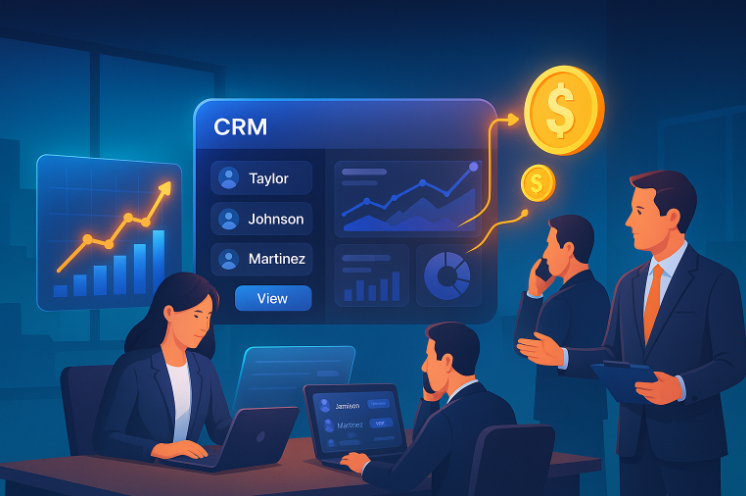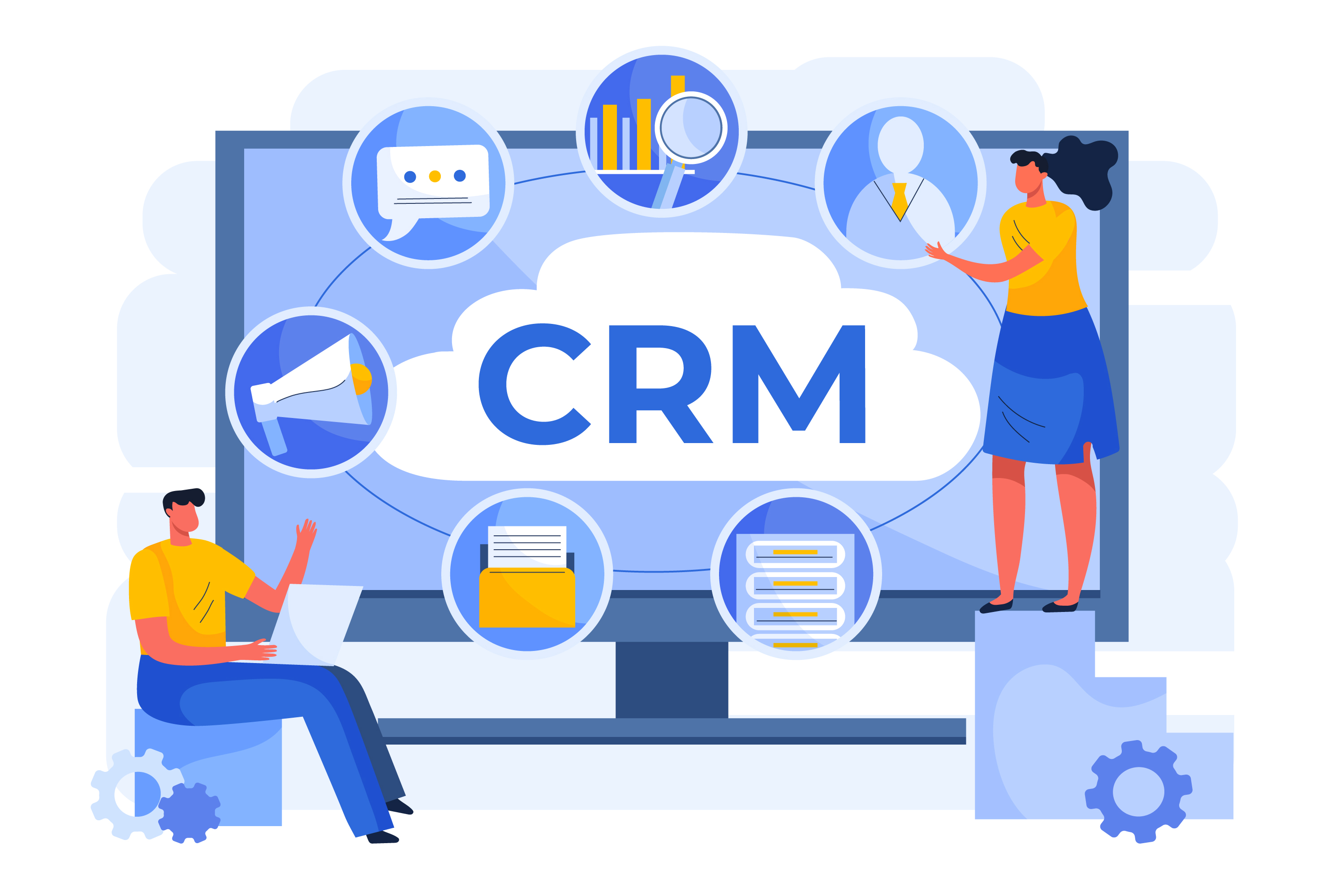How Integrated CRMs Turn Capital Markets Research into Revenue

CRM integration is transforming how capital markets firms operate, making research more actionable and directly tied to revenue generation. In today’s competitive environment, producing high-quality research isn’t enough. Firms must now link research to client engagement, track distribution, and measure impact in real time. CRM integration bridges the gap between research, sales, and execution—unlocking new revenue opportunities and improving strategic decision-making.
While CRM systems provide valuable insights across the customer lifecycle, essential client data often exists in silos spread across third-party apps, legacy platforms, and internal systems. With the average organization using over 1,000 applications, disconnected data can hinder client relationships and business performance.
Integrating your CRM with other tools creates a unified, accurate view of each client. It enhances collaboration, streamlines workflows, and enables real-time data access. When powered by AI, integrated CRMs can forecast trends, automate complex processes, and provide deeper insights.
In this article, we explore how CRM integration empowers capital markets research teams to evolve from a cost center to a strategic revenue driver—and why it’s become essential for investment banks, broker-dealers, and research providers alike.

What Is an CRM Integration/Integrated CRM?
An integrated CRM is a customer relationship management platform that consolidates data, workflows, and communications across multiple departments such as research, sales, trading, compliance, and client services into a single, unified ecosystem.
CRM integration is the act of linking your third-party apps to your CRM platform so that data may be seamlessly synchronized between them. These apps could be on-premises hardware and software, cloud-based, or legacy systems. For instance, all client information gathered during a campaign utilizing integrated marketing automation software will be instantly accessible in your CRM and all other integrated applications.
Unlike standalone CRMs, an integrated CRM system offers:
- Real-time syncing with research distribution platforms
- Integration with email and meeting tools (e.g., Outlook, Teams, Bloomberg)
- Data connections to trade execution and portfolio analytics
- Cross-team visibility into client behaviour, feedback, and follow-ups
In capital markets, this means your sales teams, research analysts, and investor relations professionals can work from a single source of truth, enhancing coordination and accelerating monetization opportunities.
The Research-Revenue Disconnect in Capital Markets
Most firms spend significant time and resources creating high-value research. Yet many struggle to:
- Identify who is consuming the content
- Measure the commercial impact of research distribution
- Align research output with revenue-generating activities
- Prove value to clients and regulators under MiFID II and other mandates
This disconnect between research teams and front-office engagement often leads to missed cross-sell opportunities, underserved clients, and suboptimal resource allocation.
With an integrated CRM in capital markets, firms can finally bridge this gap.
Benefits of CRM Integration in Capital Markets
Here’s how a CRM Integration system transforms how firms manage research and generate revenue:
1. Track Research Engagement and Client Behaviour
Integrated CRMs track exactly who opened which report, when, and how often. This includes:
- PDF downloads and report views
- Clicks on sector-specific content
- Attendance at webinars or analyst calls
- Forwarding behaviour within client firms
By surfacing these insights, capital markets sales teams can identify high-interest clients and time outreach perfectly.
2. Align Sales with Research in Real Time
A well-connected capital markets CRM allows:
- Sales reps to receive alerts when clients engage with research
- Analysts to tag sales teams on critical insights or breaking news
- All interactions—emails, meetings, and trade ideas—to be logged centrally
This ensures better follow-up, idea flow, and conversion rates, turning insights into conversations and conversations into revenue.
3. Revenue Attribution and ROI Analytics
An integrated CRM system can link:
- Research interactions → Client engagement → Trade execution → Revenue booked
This flow allows firms to measure:
- ROI per research report
- Analyst contribution to sales outcomes
- Client-level profitability based on service intensity
Such transparency is crucial for CRM in revenue management, especially under evolving client expectations and regulatory scrutiny.
4. Personalized Research Distribution
Gone are the days of mass-blasting reports to static email lists.
With CRM integration:
- Clients can be segmented by industry, AUM, or past behavior
- Preferences can be dynamically updated based on engagement
- Reports can be personalized with custom notes, charts, or summaries
This creates a tailored research experience, driving higher satisfaction and better commercial outcomes.
5. Compliance and Audit Readiness
In capital markets, compliance is non-negotiable. An integrated CRM helps by:
- Maintaining time-stamped records of all research shared
- Logging consent and opt-in preferences
- Creating a complete audit trail for each client interaction
This is essential not only for regulatory compliance but also for building client trust and data governance credibility.
Real-World Example: Turning Research into Revenue with CRM Integration
Let’s walk through how an CRM Integration system works in practice:
- Step 1: A TMT analyst publishes a report on generative AI startups.
- Step 2: The CRM logs all clients who open and engage with the report.
- Step 3: Sales receives an alert that a top-tier fund opened it 3 times in 24 hours.
- Step 4: A follow-up call is scheduled, and a trade idea is shared.
- Step 5: A block trade is executed, and the CRM links the entire journey from insight to execution.
This closed-loop process helps both sales and research teams prove value, strengthen relationships, and drive revenue.
Why an Integrated CRM System Is a Competitive Advantage
As competition intensifies and clients demand more transparency, an integrated CRM becomes a source of differentiation. Firms that implement it can:
- Deliver more personalized service
- Reduce research waste and duplication
- Accelerate response time to client needs
- Capture alpha-generating signals from client behavior
- Ensure compliance across communication channels
Ultimately, it enables capital markets firms to do more with less, serving clients better while optimizing internal resources.
The Role of InsightsCRM in Capital Markets CRM Integration
InsightsCRM is purpose-built for capital markets firms that need seamless integration between research, sales, trading, and compliance.
Key features include:
- Research engagement tracking dashboards
- Trade idea tagging and follow-up tools
- CRM email integrations for Outlook and Bloomberg
- Client tiering and segmentation workflows
- Revenue attribution analytics linked to research views
- Compliance-ready audit trails and permission logs
For firms seeking to enhance their CRM integration in capital markets, InsightsCRM provides the scalability, configurability, and capital markets intelligence necessary to achieve success.
Final Thoughts: Integrated CRM Is the New Research Monetization Engine
Research on financial markets was once thought of as a service. It is now a strategic asset, and CRM integration unlocks its full potential.
You're probably losing out on money if your excellent research is unrelated to your client interaction and sales processes.
Businesses may automate processes, centralize customer intelligence, and match research to income with an integrated CRM. This is the future in an era that prioritizes digitalization and compliance; it is no longer a choice.
Transform Your Research ROI with InsightsCRM
Ready to link research engagement to revenue growth?
Discover how InsightsCRM empowers capital markets firms to deliver personalized research, engage more effectively with clients, and achieve measurable returns on research investments.
